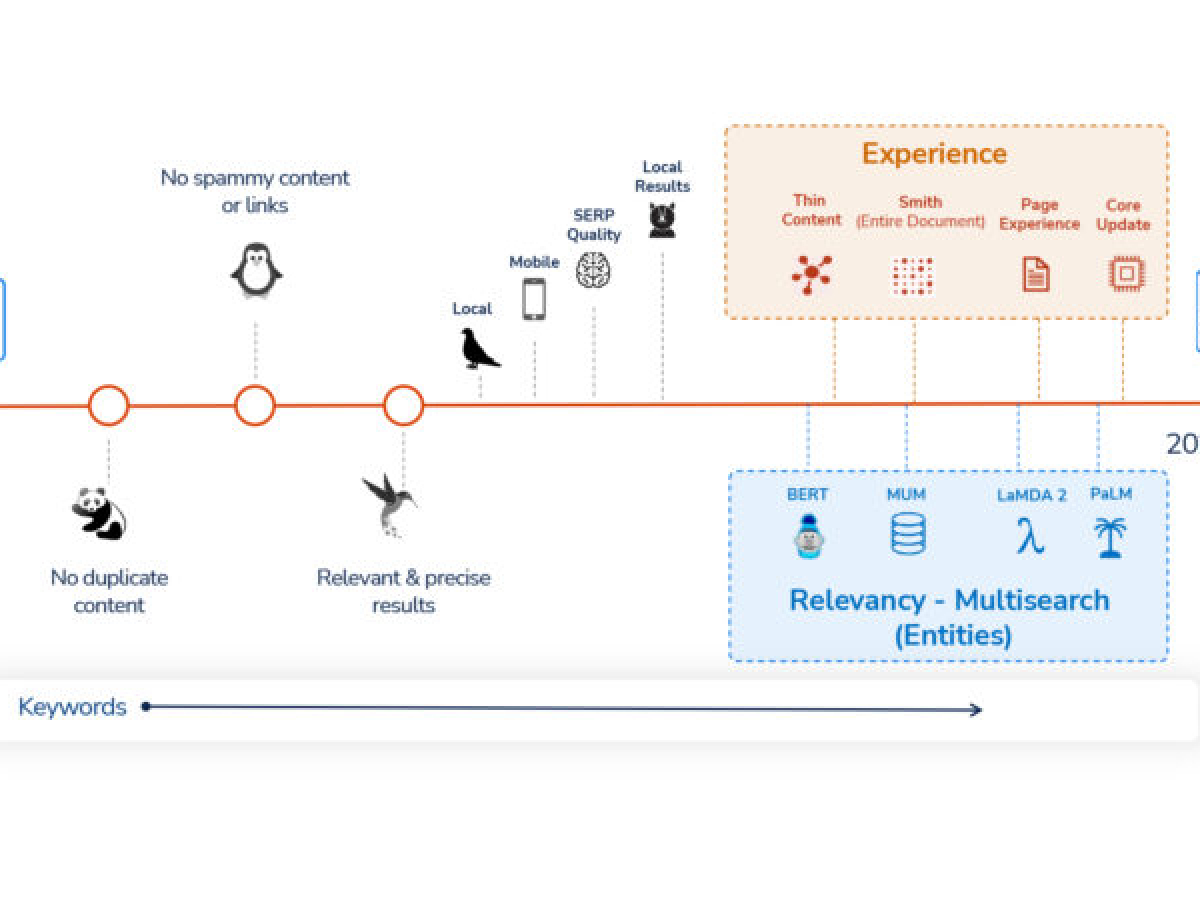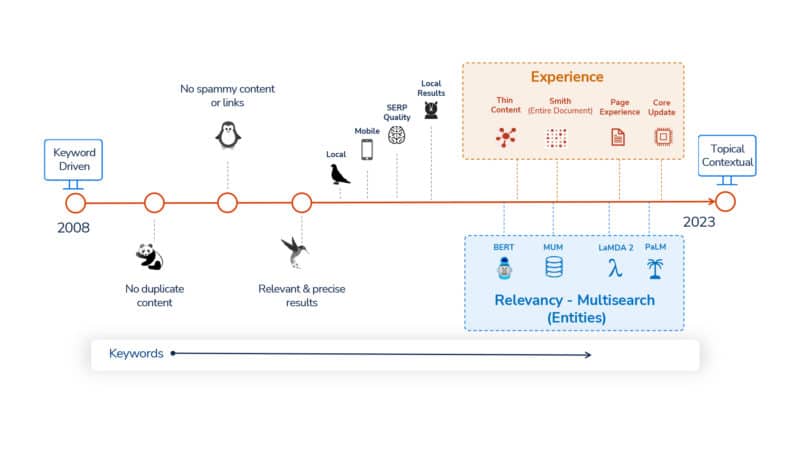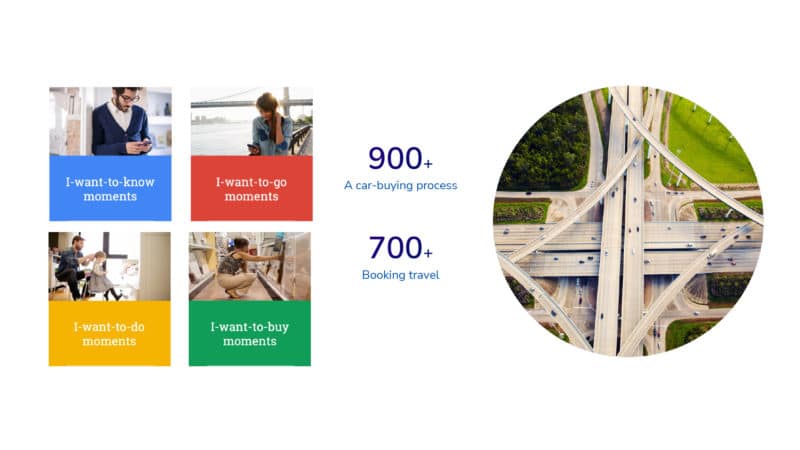
Top 5 search marketing trends and 3 must-haves for 2023
As we prepare to say goodbye to 2022 and welcome 2023, it’s a great time to review notable changes to search and consumer behaviors and plan our key digital marketing initiatives for next year.
In this article, we will discuss the most significant search, digital marketing and consumer trends, along with the must-haves for search marketers in 2023.
Search trends: Experience and relevancy
First, let’s understand the biggest changes in search this year and what we can expect next year.
Google released several algorithm updates in 2022. These algorithm updates can be classified into three broad categories.
- Core updates: Updates released to make search better and safer.
- Helpful content: Updates released to make search results useful and relevant.
- Experience: Updates released to make user experience across all devices better.
Clearly, Google wants to reward websites that offer excellent user experiences.
That means your content must be relevant to their query. In other words, experience and relevancy are key to winning in search today and beyond.

As we write the perfect recipe for search marketing strategies and must-haves for 2023, let’s keep these two critical ingredients in mind.
Consumer trends and insights: Reevaluating priorities
As we reviewed this year’s top search query data and helpful insights shared by various organizations, we realized how critical it is for brands to win the trust of their customers.
While many data points and trends are being discussed, we are focusing on five of the key consumer insights you will need to remember while creating your search marketing strategies for 2023.
- Privacy and peace of mind: Consumers are concerned about privacy and look to brands to ensure their data is not shared.
- Advertising with a purpose: Consumers are gravitating toward brands including sustainability initiatives as part of advertising and marketing efforts.
- Personalization: Google Shopping is a great example of personalizing experiences based on location, preferences, search history, etc.
- Direct to consumer: A more visual and interactive experience is critical to engage the consumer.
- Predictive analytics: Making informed decisions based on several data points is also critical.
When we understand consumer trends and insights, we are better equipped to evaluate marketing priorities – giving us peace of mind that our advertising is purposeful, personalized and helpful for consumers.
Next, let’s dive into five key marketing trends and then how to leverage these trends in 2023.
Top 5 search trends for 2023
As we begin a new year of marketing, we must step out on the right foot and shift our mindset. Long gone are the days of keyword density and the concept that content is solely king.
“More” is no longer “better.” Quality over quantity is the name of the game. We need to re-evaluate our priorities and rise to our customers’ expectations.
After reviewing search queries, consumer and search insights, and the biggest releases of 2022, below are five key trends and the three must-haves to consider for a successful 2023.

Trend 1: Multisearch – helping you search outside the box
Consumers typically spend more than 82% of their time on discovery. Google launched multisearch and released several supporting algorithms this year posed to change the way we all do discovery and receive information.
Google constantly tests different formats to display relevant search results coming from diverse sources, which reflect how people are exploring myriads of topics.
The good news: We can now search between various assets, including videos, images, PDFs, text, languages, etc.
Multisearch has opened the biggest untapped opportunities for marketers and we can see the direct benefit. Consumers can take any image and use Google Lens to explore everything about the image.
By leveraging entity data along with high-quality, relevant and contextual images, Google can get to the most relevant search results faster.
In 2023, we will see savvy search marketers leveraging all types of assets, Google Vision API and entity data to provide the most relevant and qualitative assets.
Futureproofing your digital assets for discovery is your key to unlocking doors and winning in 2023.

Trend 2: Helpful content – relevant, qualitative, accessible, authoritative, experiential
Google recently updated its quality raters guidelines and helpful content system. The easiest way to evaluate whether your content is helpful is by covering critical touchpoints and micro-moments.
Helpful content is content that is readily available for your customer across all the digital touchpoints, minimizing the need for them to search somewhere else.

Google’s helpful content update is a machine learning algorithm that keeps getting trained based on search result datasets. It is a sitewide signal, so if too many pages of a domain are low quality (e.g., duplicate, thin or created solely to rank in search engines), there is a serious risk that your organic search performance could suffer.
In 2023, search marketers must ensure that discoverable content is relevant, informative, qualitative, authoritative, and experiential.
Search engines will reward businesses for sharing high-quality and informative content. Brands should enhance online visibility significantly by sharing topical entity-first content.
Content strategy should include all types of content, including videos, product review information, FAQ, relevant images, PDF, and expert advice.
Brands must also map current content across the customer journey touchpoints and strive to fill all the content gaps.
Trend 3: Omnichannel experience
Most consumers shift between various devices, so a consistent and unified experience across all touchpoints is important.
Centralizing critical information about the business and distributing it across all marketing channels is necessary for a seamless omnichannel experience in 2023.
The speed of change across channels builds trust with consumers. For example, website information should change right away when, as a business, you decide to change your Google Business Profile or social profile information.
With the release of Google Analytics 4, Google is gently training marketers to focus on customer behaviors and attribution from various channels across the customer journey rather than the last-clicked channel.
Discovery of content, good website user experience, and site health will also become must-haves for 2023.

If information cannot be crawled and indexed, it will not be available to consumers making it useless. As the economy slows and budgets become tighter, search marketers must prioritize technical SEO initiatives to yield good results.
Trend 4: Personalization and localization
Consumers are looking for information based on interest, location, and other known and unknown factors. Online shoppers are likelier to buy from brands with a strong local presence and engagement with their consumers.
We must ensure our global search marketing strategies are customized for location.
Google matches images to searcher intent because today, approximately 36% of a mobile screen is occupied by images. As a local business, consider:
- Responding to frequently asked questions.
- Providing relevant local information and images.
- Ensuring awesome omnichannel experiences for consumers.

Local search continues to be highly strategic for Google, according to local SEO expert Greg Sterling. But the search engine is shifting away from local search as a moneymaker (ads driver) and focusing more on product search. That means even thinner support for local SEOs and local businesses.
Google will further develop and build out product search and SERPs to better compete with Amazon and drive more product-search usage. Retailers are the number one advertiser online and Google wants to keep and grow those dollars. We’ll see more real-time local product inventory online, including from smaller retailers.
While localization is super critical, I also think that for 2023, personalizing information based on consumer preference will become a must-have. Using customer data platforms to secure preferences and create content and campaigns based on customer data is also key in this area.
Trend 5: Influencer marketing and expert community building
Influencer marketing is growing rapidly and even faster than social media marketing.
Savvy consumers curate information and follow expert opinions from influencers they trust before making purchase decisions.
We’re already seeing various social channels posting information around expert reviews /community and interactive videos are doing well.
In 2023, brands will benefit by:
- Building an expert community of influencers.
- Providing the most informative, helpful content in the most interactive format.
- Aligning various KPIs such as engagement and clicks to measure success.

Sterling noted that some of Google’s SERP changes are driven by TikTok’s popularity, including the push to make search more visual.
Accordingly, we will see Google emphasize more visual content and potentially de-emphasize reviews (though not for ranking purposes.)
Google will intensify its recent crackdown on review fraud, which will continue to catch “innocent” reviews on its net.
Local marketers will need to keep a continuous stream of Google reviews coming and simply be prepared to lose a percentage of reviews to Google’s AI filtering.
Top 3 strategy must-haves to stay ahead
Next, let's discuss the top focus areas in our strategy to leverage the above trends.
1. Business intelligence
The global economy is showing slow down. Deriving business insights and actions from the most relevant data points will become critical in 2023.
Keep an eye on market trends, competitive benchmarking, customer behavior, channels and goals prioritization, among others.
More savvy businesses will pivot toward business intelligence to find the most critical information, prioritizing quality content and assets and basing those decisions on what is most critical based on real data.

2. Artificial intelligence and machine learning (AI/Ml)
In 2023, AI/ML will become a must-have strategy to solve complex marketing problems. AI-generated content (e.g., ChatGPT) has become a much bigger feature of digital and content marketing, including for local search.
Google is also leveraging machine learning to auto-translate any language quickly. From visual search to auto-generation and translation of content, we will see several AI models, such as GPT-3 (soon GPT-4), used excessively to solve complex problems.
3. Your success plan
Last but not least, less will be more in 2023.
The key to winning will be defining and aligning your business objectives, key drivers (channels), important metrics to track, and the solutions that will help you get to those metrics.
Thanks to Bill Hunt, Greg Sterling, Andrew Shotland and Dixon Jones for sharing insights and ideas for this article.
The post Top 5 search marketing trends and 3 must-haves for 2023 appeared first on Search Engine Land.
from Search Engine Land https://searchengineland.com/search-marketing-trends-must-haves-2023-390308
via free Seo Tools
One thought on “Top 5 search marketing trends and 3 must-haves for 2023”
Very nice post. I just stumbled upon your blog and wanted to say that I’ve really enjoyed browsing your blog posts. In any case I’ll be subscribing to your feed and I hope you write again soon!